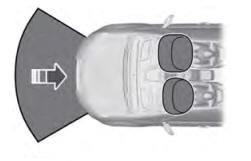Ford Explorer: Battery, Mounting and Cables / Diagnosis and Testing - Battery
General Equipment
| Diagnostic Battery Charger |
-
Use Ford approved battery test equipment.
-
Midtronics MDX-650 or P-300/P-600/490/1050
-
Midtronics GRX-3590 or 3000
-
Midtronics MDX-650 or P-300/P-600/490/1050
Diagnostics in this manual assume a certain skill level and knowledge of Ford-specific diagnostic practices.
REFER to: Diagnostic Methods (100-00 General Information, Description and Operation).
Diagnostic Trouble Code (DTC) Chart
Diagnostics in this manual assume a certain skill level and knowledge of Ford-specific diagnostic practices.
REFER to: Diagnostic Methods (100-00 General Information, Description and Operation).
Diagnostic Trouble Code Chart
| Module | DTC | Description | Action |
|---|---|---|---|
| BCM | B11D9:09 | Vehicle Battery:Component Failures | GO to Pinpoint Test C |
Symptom Chart
Diagnostics in this manual assume a certain skill level and knowledge of Ford-specific diagnostic practices.
REFER to: Diagnostic Methods (100-00 General Information, Description and Operation).
Symptom Chart: Battery
| Condition | Action |
| Main engine compartment battery is not fully charged | GO to Pinpoint Test A |
| Auxiliary battery is not fully charged | GO to Pinpoint Test B |
Pinpoint Test
.jpg) PINPOINT TEST A : MAIN ENGINE COMPARTMENT BATTERY CONDITION TEST
PINPOINT TEST A : MAIN ENGINE COMPARTMENT BATTERY CONDITION TEST|
Normal Operation and Fault Conditions Battery condition is determined by measuring battery terminal voltage after a specific discharge current is applied for a specified time period. Possible Sources
Visual Inspection and Pre-checks
|
||||
| A1 TEST THE MAIN ENGINE COMPARTMENT BATTERY CONDITION | ||||
|
NOTE: Failure to fully charge the battery before retesting may cause false readings.
Is the battery OK?
|
.jpg) PINPOINT TEST B : AUXILIARY BATTERY CONDITION TEST
PINPOINT TEST B : AUXILIARY BATTERY CONDITION TEST|
Normal Operation and Fault Conditions Battery condition is determined by measuring battery terminal voltage after a specific discharge current is applied for a specified time period. Possible Sources
Visual Inspection and Pre-checks
|
||||
| B1 TEST THE AUXILIARY BATTERY CONDITION | ||||
|
NOTE: Failure to fully charge the battery before retesting may cause false readings.
Is the auxiliary battery voltage greater than 12 volts?
|
.jpg) PINPOINT TEST C : B11D9:09
PINPOINT TEST C : B11D9:09|
Normal Operation and Fault Conditions The BCM monitors both the main battery and auxiliary battery. The main battery has a BMS and the auxiliary battery has a battery current sensor. The BMS for the main battery communicates on a dedicated LIN to the BCM. The battery current sensor for the auxiliary battery uses a PWM circuit which is wired to the BCM. DTC Fault Trigger Conditions
Possible Sources
Visual Inspection and Pre-checks
|
||||||
| C1 INSPECT ALL BATTERY CONNECTIONS | ||||||
Are all battery cable connections securely fasten to the main and auxiliary battery?
|
||||||
| C2 CHECK THE AUXILIARY BATTERY FUSE | ||||||
Are the auxiliary battery fuses ok?
|
||||||
| C3 VERIFY THE BATTERIES CONDITION | ||||||
Do the main engine compartment battery and auxiliary battery pass the condition test?
|
 Description and Operation - Battery and Cables - System Operation and Component Description
Description and Operation - Battery and Cables - System Operation and Component Description
System Operation
Gasoline Vehicles
The
main battery, which is located in the engine compartment, is a 12 volt
DC source connected in a negative ground system and is a voltage
stabilizer for the..
 General Procedures - Battery Charging
General Procedures - Battery Charging
Charging
WARNING:
Before beginning any service procedure in this section,
refer to Safety Warnings in section 100-00 General Information. Failure
to follow this instruction may result in..
Other information:
Ford Explorer 2020-2026 Service Manual: Diagnosis and Testing - Body Closures
Diagnostic Trouble Code (DTC) Chart Diagnostics in this manual assume a certain skill level and knowledge of Ford-specific diagnostic practices. REFER to: Diagnostic Methods (100-00 General Information, Description and Operation). Diagnostic Trouble Code Chart Module DTC Description Action BCM B11C4:2..
Ford Explorer 2020-2026 Owners Manual: Economical Driving
Fuel economy is affected by several things such as how you drive, the conditions you drive under and how you maintain your vehicle. You may improve your fuel economy by keeping these things in mind: Accelerate and slow down in a smooth, moderate fashion...
Categories
- Manuals Home
- 6th Generation Explorer Owners Manual
- 6th Generation Explorer Service Manual
- Removal and Installation - Front Halfshaft Speed Sensor
- Description and Operation - Jacking and Lifting - Overview
- Automatic Transmission - 10-Speed Automatic Transmission – 10R60
- New on site
- Most important about car
Driver and Passenger Airbags
WARNING: Do not place your arms on the airbag cover or through the steering wheel. Failure to follow this instruction could result in personal injury.
WARNING: Keep the areas in front of the airbags free from obstruction. Do not affix anything to or over the airbag covers. Objects could become projectiles during airbag deployment or in a sudden stop. Failure to follow this instruction could result in personal injury or death.
WARNING: Airbags can kill or injure a child in a child restraint. Never place a rear-facing child restraint in front of an active airbag. If you must use a forward-facing child restraint in the front seat, move the seat upon which the child restraint is installed all the way back.


.jpg) PINPOINT TEST A : MAIN ENGINE COMPARTMENT BATTERY CONDITION TEST
PINPOINT TEST A : MAIN ENGINE COMPARTMENT BATTERY CONDITION TEST